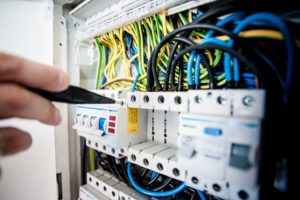Over the years, I learned EMC with high frequency / high power converters. As a result, the problems I faced were generally not the same as those of a company doing low power information technology, telecommunications or consumer equipment. This is certainly not a comprehensive list and if you can get these few things under control, you will be a long way toward making a compatible product or system.
If you care to learn some of the basics through book study or to add to your reference library, here are a few titles in my personal library:
I especially like the subtitle on the last book, “A handbook of black magic”. Often, when I am guiding a newly minted engineer through the disciplines of EMC, or even an old timer who needs help, I will mention that EMC is not really black magic, it’s actually a study of all the circuitry that was not included in the system schematics.
Here are my top five best practices:
- Design ground: Have you ever heard the adage in electronics 101, “Ground is ground the world ’round?” With high power or high frequency electronics this is simply not true! It does not matter if the top frequencies are LF, MF, HF or higher. If I have occasion to ask a design engineer “what impedance is ground” or “what path do the parasitic noise currents follow” and a guessing game begins, then I know there has been no consideration for designing ground.
- Keep low level signals separate from or orthogonal to power lines: Parasitic coupling (capacitive & inductive) between conductors is unavoidable. Whether 8 mil circuit traces under an IC chip or 6 AWG cables near a sense line, the problem is really the same. The way to mitigate in each of those cases is different but a fundamental understanding of all the coupling mechanisms is essential in any case.
- Don’t get mired in worries about common mode vs differential mode: Ultimately all conducted and radiated RF noise can be found at the noise source to be a difference in voltage or current across an impedance. It is when you move your reference point to the perimeter of the product or to an antenna nearby that RF noise can be communicated as common mode or differential mode.
- Learn how to use a spectrum analyzer/receiver: Learn the types of detectors (Avg, Pk, QP) and why they are important. Learn to diagnose the noise profile and thereby identify noise sources (more on this at another time).
- Learn from your mistakes: My favorite definition for wisdom is “The stuff you get immediately after you needed it most”. This is not about book learning and early in your career you are liable to make a few mistakes. In the end, each person must learn for themselves. If only we could bottle wisdom and just hand it to the next person, we could make millions.
Henry Ott’s website does a tongue-in-cheek article on “The Ten Best Ways to Maximize the Emission from Your Product.”
All for now, please contact me if you have specific questions on any of these topics.
:Doug

